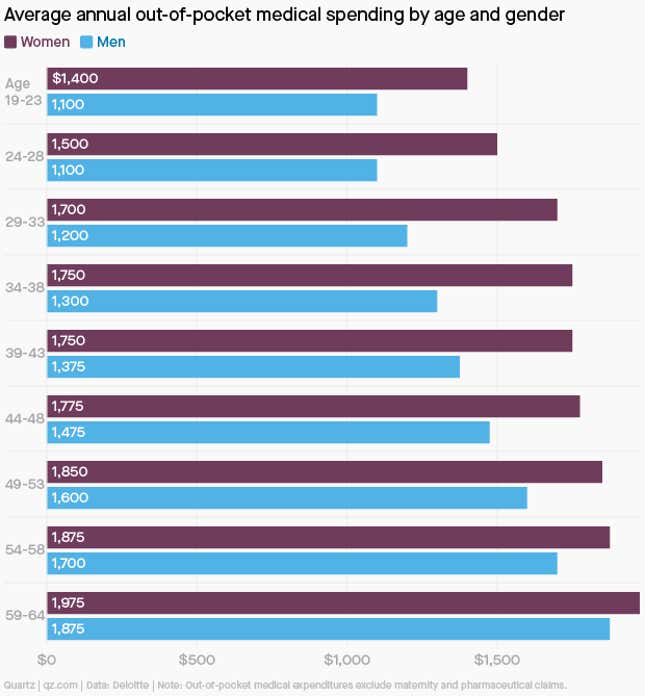Out-of-pocket healthcare expenses cost women $15 billion more per year than men in the US, according to a recent report (pdf) by Deloitte. The report analyzed health insurance data from 2017 to 2022, and raises questions about how businesses and health insurers can help close the gap.
Women ages 19 to 64 experience disproportionately higher out-of-pocket medical expenses compared to men, even when excluding pregnancy-related services. The analysis excludes pharmaceuticals. On average, female employees with individual coverage incur around $266 more in annual out-of-pocket costs than their male counterparts, according to Deloitte. The financial challenge highlights the need for businesses to scrutinize benefits coverage to make health care more affordable for female employees, especially when gender-based wage gaps persist.

Lower pay, higher health needs
Deloitte also found (pdf) that men are generally more than twice as likely as women to wait more than two years between visits to see a health care professional. When men do seek care they also have fewer services across the board: 46% of men in the study had less than $1,000 in claims annually compared to 35% for women. Women generally encounter medical services that surpass the typical deductible, leading to higher out-of-pocket payments. This could be because they seek more services, either from primary care doctors or specialists, more frequently than men.
Key categories women spend on, in addition to maternity care, include services in radiology, laboratory, mental health, emergency room, office visits, chiropractic, and physical and occupational therapy. Deloitte’s report suggests that insurers and employers should more closely analyze members and benefits to better understand coverage needs based on demographics and health status. Businesses could work with health insurance carriers to understand how benefits could be modified to revise cost-sharing design and help close disparities.


